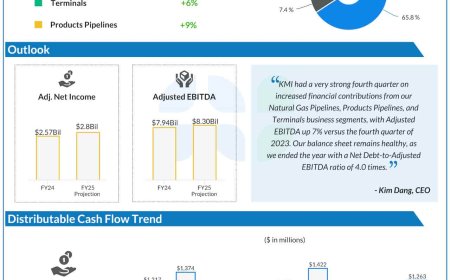USD / CAD - Canadian dollar retreats
- Widening CAD/US interest rate spreads weighing on Loonie. - FOMC minutes due today. - US dollar rebounds on sickly inflation data USDCAD: open 1.4371, overnight range 1.4339-1.4410, close 1.4370, WTI $73.81, Gold, $2634.45 The Canadian dollar is moving in line with general US dollar trends, but local factors are weighing on prices. Canadian 10-year government bond yields sit at 3.374%, compared to 4.712% for US 10-year bonds, creating a spread of 133.8 basis points. Trump’s threat of imposing 25% tariffs is amplifying risks for the Canadian dollar, especially as Canada’s government is currently in disarray. WTI oil prices traded between $74.26 and $75.30, holding steady near the middle of the range in New York trading. Prices are buoyed by optimism that China’s recent consumer support measures will boost oil demand. Additionally, the US cold snap has contributed to a significant 4.022-million-barrel drawdown in crude inventories, as reported by the API. The US dollar’s two-day decline came to an abrupt halt following inflation-leaning economic data that triggered heavy bond selling. The 10-year Treasury yield rose sharply to 4.70%, up from its 4.59% starting point for the year. The ISM Services PMI exceeded expectations, with the prices subcomponent surging by 6.4%, fueling further dollar strength. Market sentiment suggests that today’s strong dollar trend could persist if ADP employment data surpasses the 140,000 forecast or if jobless claims fall instead of rising by the anticipated 7,000. The release of the December 19 FOMC meeting minutes this afternoon has drawn significant attention. Analysts are keen to uncover more details about why policymakers foresee only two rate cuts in 2025. EURUSD struggled as selling pressure mounted, driven by persistently high US inflation figures and weak German economic data. German factory orders dropped 5.4% in November, while retail sales declined by 0.6% month-over-month. Broader Eurozone sentiment indicators provided no relief, with economic sentiment falling by 1.7 points to 94.5 and employment expectations slipping to 98.4. GBPUSD faced a sharp downturn, battered by concerns that higher UK gilt yields would push the Chancellor of the Exchequer to implement additional tax hikes beyond those already planned. The latest gilt auction saw rates rise 50 basis points above budget assumptions. Caution ahead of today’s US data and the looming FOMC minutes weighed heavily on the pound. USDJPY climbed higher, supported by rising US 10-year Treasury yields, which reached 4.71% today. The pair is benefiting from data suggesting persistent US inflation and the ongoing divergence between Bank of Japan and Federal Reserve monetary policies. AUDUSD declined following a softer-than-expected reading of the RBA’s preferred inflation gauge. The trimmed CPI fell to 3.2% year-over-year from 3.5%, fueling expectations for a 25-basis-point rate cut at the RBA’s February 18 meeting.

- Widening CAD/US interest rate spreads weighing on Loonie.
- FOMC minutes due today.
- US dollar rebounds on sickly inflation data
USDCAD: open 1.4371, overnight range 1.4339-1.4410, close 1.4370, WTI $73.81, Gold, $2634.45
The Canadian dollar is moving in line with general US dollar trends, but local factors are weighing on prices. Canadian 10-year government bond yields sit at 3.374%, compared to 4.712% for US 10-year bonds, creating a spread of 133.8 basis points. Trump’s threat of imposing 25% tariffs is amplifying risks for the Canadian dollar, especially as Canada’s government is currently in disarray.
WTI oil prices traded between $74.26 and $75.30, holding steady near the middle of the range in New York trading. Prices are buoyed by optimism that China’s recent consumer support measures will boost oil demand. Additionally, the US cold snap has contributed to a significant 4.022-million-barrel drawdown in crude inventories, as reported by the API.
The US dollar’s two-day decline came to an abrupt halt following inflation-leaning economic data that triggered heavy bond selling. The 10-year Treasury yield rose sharply to 4.70%, up from its 4.59% starting point for the year. The ISM Services PMI exceeded expectations, with the prices subcomponent surging by 6.4%, fueling further dollar strength. Market sentiment suggests that today’s strong dollar trend could persist if ADP employment data surpasses the 140,000 forecast or if jobless claims fall instead of rising by the anticipated 7,000.
The release of the December 19 FOMC meeting minutes this afternoon has drawn significant attention. Analysts are keen to uncover more details about why policymakers foresee only two rate cuts in 2025.
EURUSD struggled as selling pressure mounted, driven by persistently high US inflation figures and weak German economic data. German factory orders dropped 5.4% in November, while retail sales declined by 0.6% month-over-month. Broader Eurozone sentiment indicators provided no relief, with economic sentiment falling by 1.7 points to 94.5 and employment expectations slipping to 98.4.
GBPUSD faced a sharp downturn, battered by concerns that higher UK gilt yields would push the Chancellor of the Exchequer to implement additional tax hikes beyond those already planned. The latest gilt auction saw rates rise 50 basis points above budget assumptions. Caution ahead of today’s US data and the looming FOMC minutes weighed heavily on the pound.
USDJPY climbed higher, supported by rising US 10-year Treasury yields, which reached 4.71% today. The pair is benefiting from data suggesting persistent US inflation and the ongoing divergence between Bank of Japan and Federal Reserve monetary policies.
AUDUSD declined following a softer-than-expected reading of the RBA’s preferred inflation gauge. The trimmed CPI fell to 3.2% year-over-year from 3.5%, fueling expectations for a 25-basis-point rate cut at the RBA’s February 18 meeting.











































